UPDATE: Missing F-35 found in South Carolina
- By Alex Hollings
Share This Article
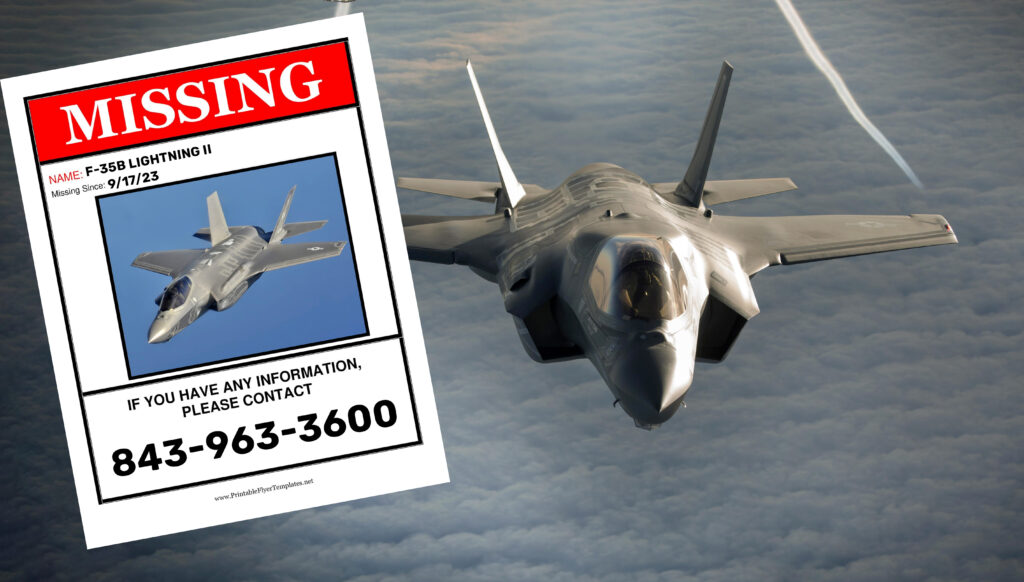
An advanced F-35 stealth fighter is missing somewhere around South Carolina after its Marine pilot ejected for unspecified reasons. The pilot parachuted to safety, landing in a residential neighborhood in Charleston. He was taken to a nearby medical center and is listed as in stable condition.
The aircraft, however, was reportedly on autopilot at the time of the ejection and has yet to be found.
UPDATE: It’s been reported that debris from the missing F-35 has been found in a field located not far from the site of the pilot’s ejection in South Carolina.
BREAKING: A debris field has been found in South Carolina during the search for a F-35 fighter jet that had gone missing after a "mishap" on Sunday, officials say. https://t.co/uo2NwcLYEc pic.twitter.com/0MDEonjYHN
— ABC News (@ABC) September 18, 2023
The following is our original story as it appeared prior to the F-35 being located.
The F-35B that went missing was one of two stealth fighters hailing from the Marine Fighter Attack Training Squadron (VMFAT) 501 from the 2nd Marine Aircraft Wing that departed from Marine Corps Air Station Beaufort on Sunday afternoon. The pilot of the missing F-35B ejected at approximately 2:00 PM local time somewhere near the Lake Moultrie and Lake Marion areas near Charleston, South Carolina. These two lakes include some 170,000 acres of water surface and are surrounded by rural camping areas and swampland, creating a vast expanse of wilderness the aircraft could have potentially crashed in.
Officials in the area are asking that anyone who may have information regarding the location of the crash to contact them at Joint Base Charleston’s Base Defense Operations Center at 843-963-3600.
We’re working with @MCASBeaufortSC to locate an F-35 that was involved in a mishap this afternoon. The pilot ejected safely. If you have any information that may help our recovery teams locate the F-35, please call the Base Defense Operations Center at 843-963-3600.
— Joint Base Charleston (@TeamCharleston) September 17, 2023
However, depending on the state of the aircraft upon the pilot’s ejection, it’s possible that the F-35B continued flying for hundreds of miles.
Related: These are the 3 different aircraft we call the F-35
How do you lose an F-35?
The aircraft that’s gone missing is a U.S. Marine Corps F-35B Lightning II, which is the short take-off/vertical landing (STOVL) version of the stealth fighter that’s often operated from Navy amphibious assault ships. This iteration carries the least internal fuel of the three F-35 variants but still offers a fully-fueled range of some 900 nautical miles (around 1,035 miles) depending on flight profile.
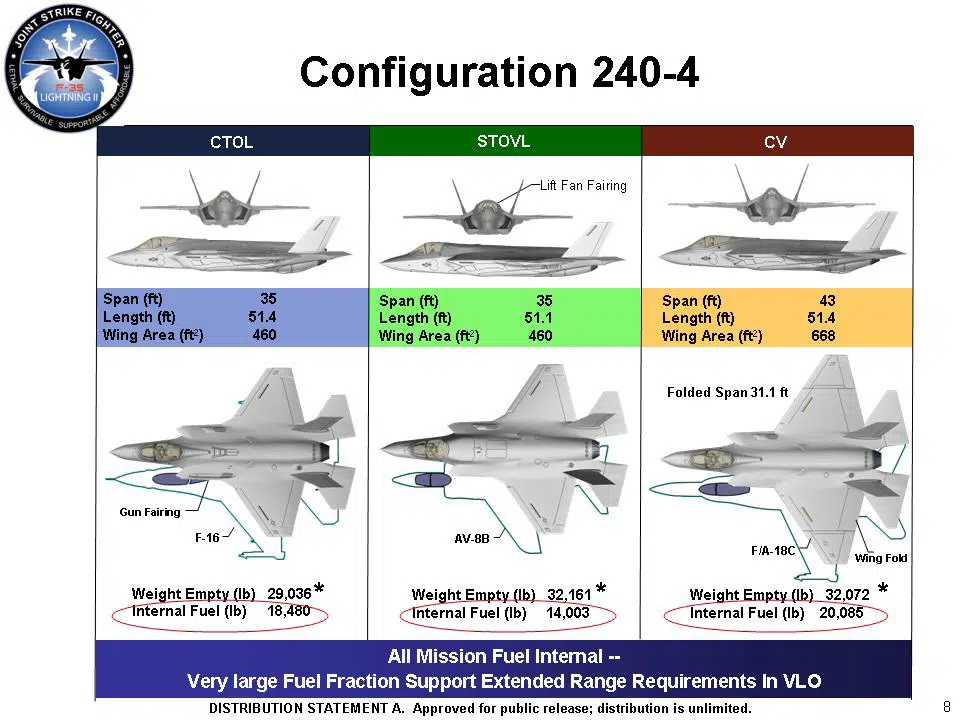
There are multiple ways in which these aircraft are tracked during standard operations and combat exercises, including onboard transponders, a combination of ground-based radar and satellite surveillance systems, and specialized instrumentation pods often used during exercises to collect and transmit information about aircraft and pilot performance. However, this effort becomes a bit more complicated when it comes to stealth platforms like the F-35, which are designed specifically to be able to evade detection (and most importantly, targeting) while flying in hotly contested airspace.
According to Joint Base Charleston spokesperson Jeremy Huggins, the aircraft’s transponder was not functioning at the time of the ejection “for some reason that we haven’t yet determined.”
A transponder is an electronic device carried by all aircraft that broadcasts a signal response with pertinent information for air traffic control, like the aircraft’s altitude, speed, and identification code. Military pilots can and sometimes do turn off their transponders for operational security during some kinds of operations and exercises, but doing so must be authorized by the FAA when flying over the United States.
Based on Huggins’ statement, it does not appear the transponder was intentionally deactivated during this flight.
Related: The origins of SOCOM’s stealth Black Hawk helicopters
Radar reflectors and other forms of radar detection
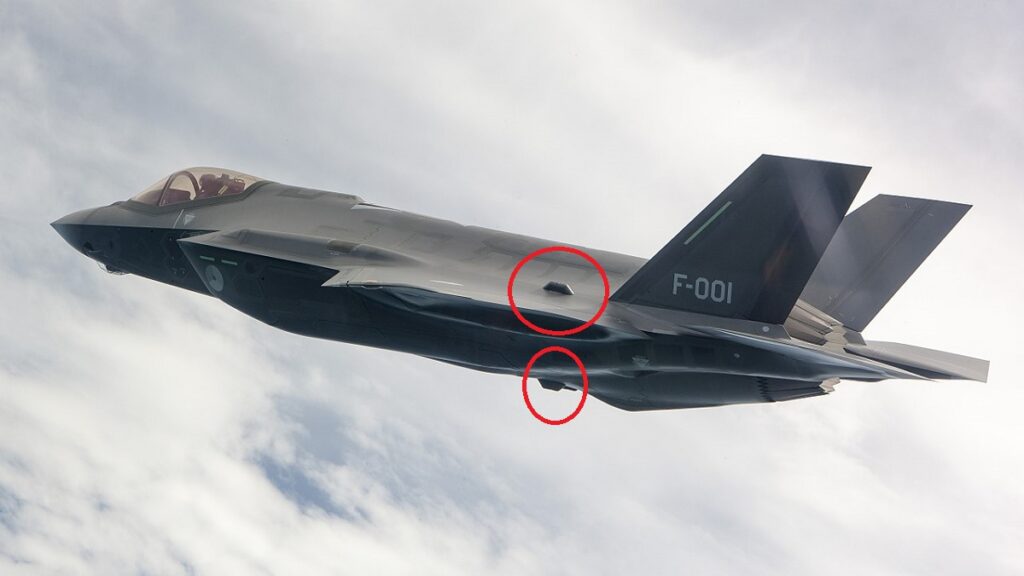
When it comes to radar detection, things can be a bit more complicated. Stealth fighters like the F-35 are designed specifically to delay or defeat detection via high-frequency radar arrays that are capable of providing air defenders with a “weapons-grade lock,” or the means to guide a missile into a target. However, design elements on the F-35 and other stealth fighters, like their standing vertical tail surfaces and gaping jet inlets, can sometimes produce a resonance that is detectable via lower-frequency radar arrays like those used for weather tracking, some air traffic control stations, and early-warning defense radars.
But this form of detection isn’t consistent. A stealth fighter may produce a resonance at some angles of observation and not others, for instance. In other words, there’s no guarantee that even low-frequency radar arrays will be able to spot and track an aircraft like the F-35.
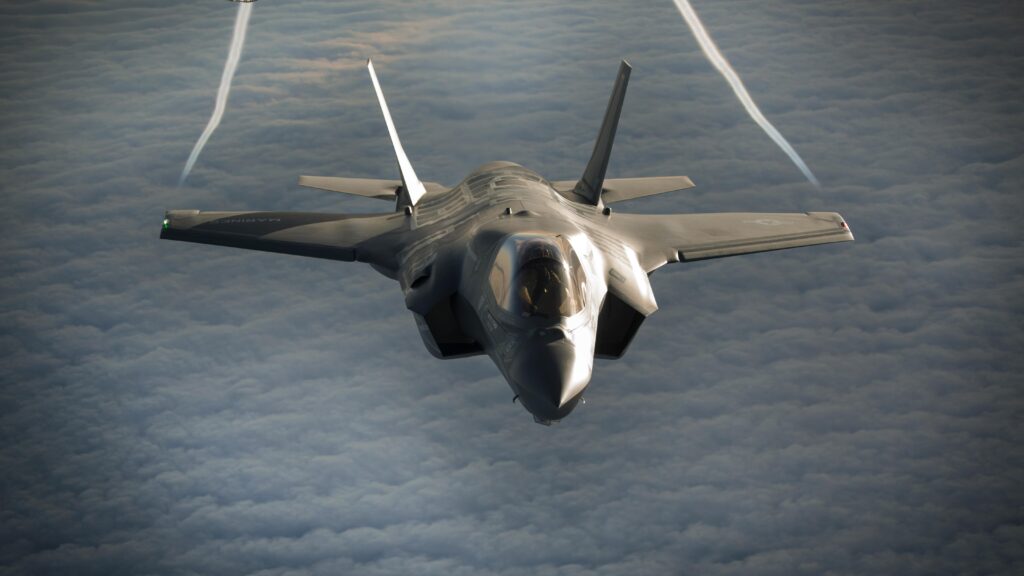
However, stealth aircraft conducting training exercises or ferry flights often fly with radar reflectors installed called Lunenberg Lenses. These removable radar reflectors produce such a powerful radar return that they can not only render a stealth aircraft completely detectable, but they can also mask the aircraft’s usual radar signature. That makes these lenses extremely useful not only for tracking stealth aircraft, but for preventing adversary nations from gathering useful intelligence on stealth capabilities as these aircraft fly over international waters or foreign countries.
It would seem this F-35 was not flying with Lunenberg Lenses installed, otherwise tracking it after the pilot ejected would have been a fairly simple enterprise, provided the fighter wasn’t flying too low to track (skimming the treetops).
Related: Iran claims to detect F-35s over the Persian Gulf. Here’s why it could be true
A fighter flying on its own after the pilot ejects has happened before
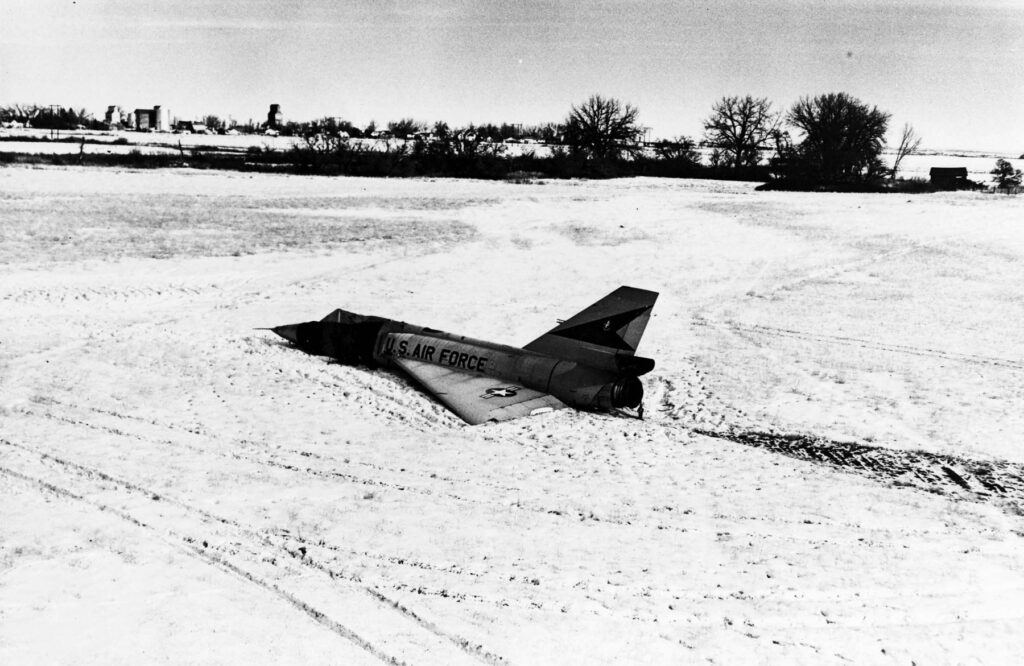
While it’s entirely possible that this aircraft went down somewhere in rural South Carolina, it wouldn’t be unheard of for a fighter to continue on for some time even after its pilot ejects. Perhaps the most famous such event took place on February 2, 1970, when 1st Lieutenant Gary Foust ejected from his F-106 Delta Dart in Montana.
Foust’s jet went into a spin, eventually forcing him to eject at around 15,000 feet. With the pilot and canopy gone, the aircraft settled into a dive before recovering into straight and level flight entirely on its own. The aircraft ultimately came to a gentle landing on its belly in a cornfield 50 miles away. That aircraft was eventually repaired and returned to service.
Read more from Sandboxx News
- Army pauses retention cash bonuses amid sky-high reenlistment rate
- Incredible mortar-assembly challenges with the Green Berets
- The Marine Corps is not struggling with recruiting and this may be due to its unique nature
- Watch this rare combat footage of B-17 bombers raiding Germany
- The origins of SOCOM’s stealth Black Hawk helicopters
Related Posts
Sandboxx News Merch
-

‘AirPower’ Classic Hoodie
$46.00 – $48.00 Select options This product has multiple variants. The options may be chosen on the product page -

‘Kinetic Diplomacy’ Bumper Sticker (Black)
$8.00 Add to cart -

‘Sandboxx News’ Trucker Cap
$27.00 Select options This product has multiple variants. The options may be chosen on the product page

Alex Hollings
Alex Hollings is a writer, dad, and Marine veteran.
Related to: Breaking News
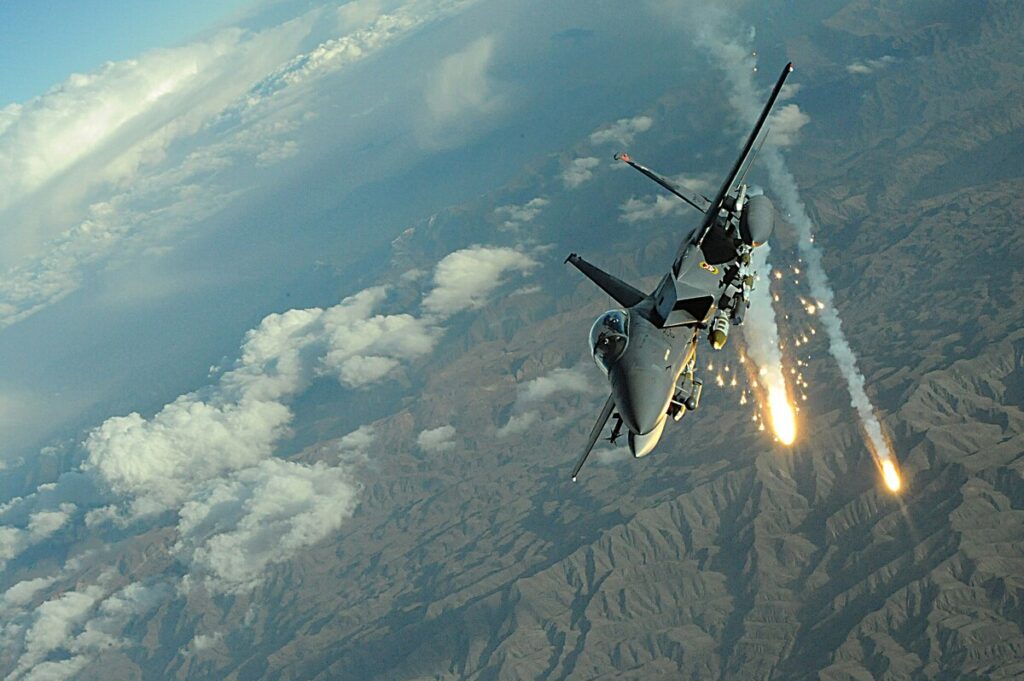
How an F-15E scored its only air-to-air kill… with a bomb

The military roots of Juneteenth and why we celebrate it

BUD/S instructors have their favorite games to make SEAL candidates suffer
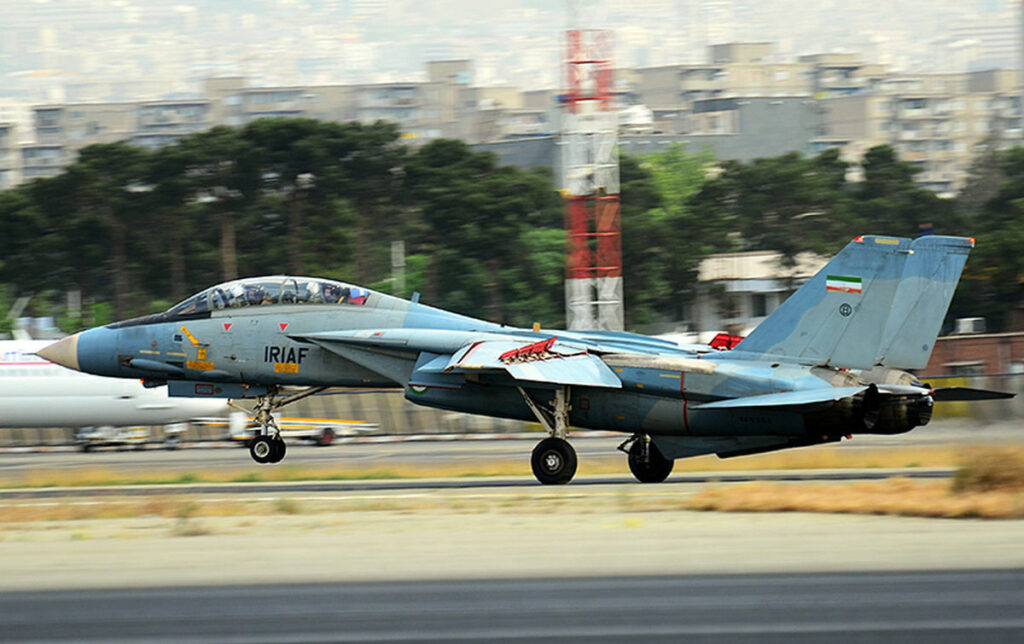
Israel wipes out Iranian F-14 Tomcats on the airstrip
Sandboxx News
-

‘Sandboxx News’ Trucker Cap
$27.00 Select options This product has multiple variants. The options may be chosen on the product page -

‘AirPower’ Classic Hoodie
$46.00 – $48.00 Select options This product has multiple variants. The options may be chosen on the product page -

‘AirPower’ Golf Rope Hat
$31.00 Select options This product has multiple variants. The options may be chosen on the product page -

‘Sandboxx News’ Dad Hat
$27.00 Select options This product has multiple variants. The options may be chosen on the product page
